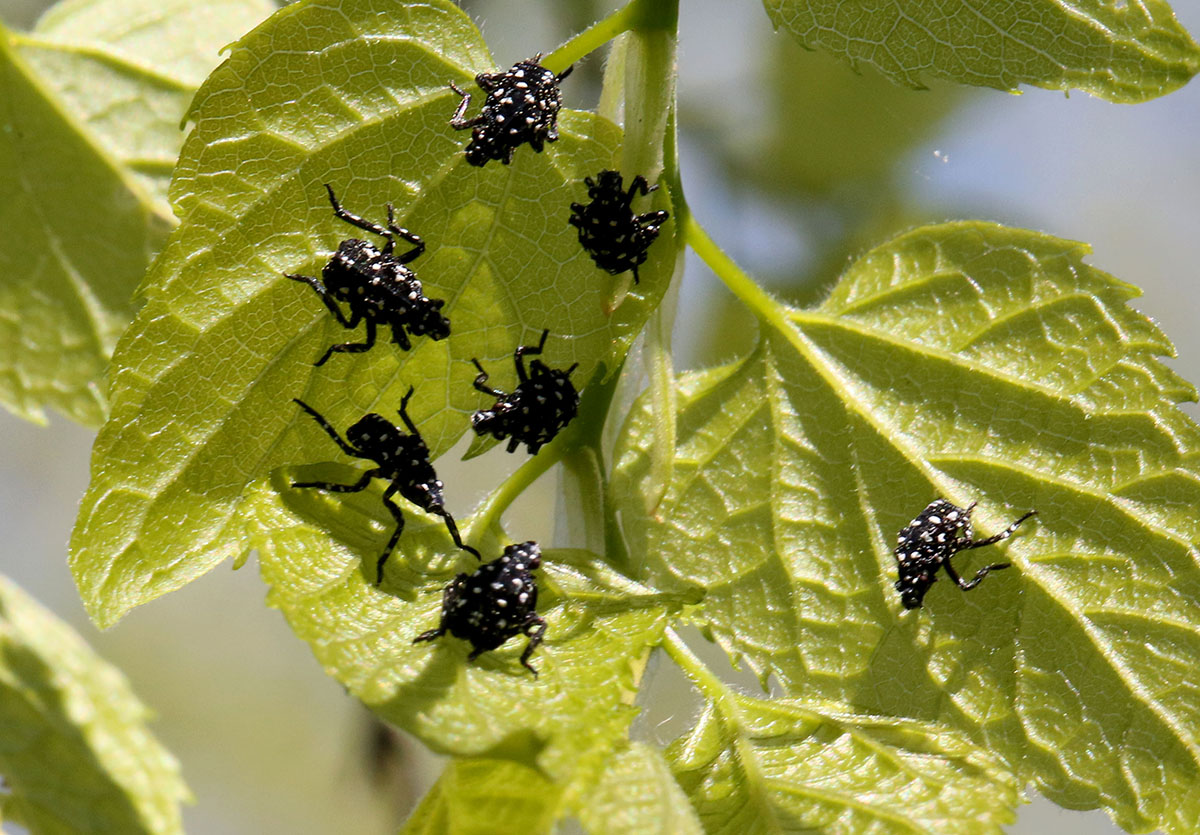Invasive Spotted Lanternfly Established in Prince William County

Sightings of the spotted lanternfly, or SLF, an invasive species that can feed on more than 100 species of trees and plants, was first confirmed in Prince William County in March 2021.
While the presence of the pest is currently limited to a few areas of the county, the Prince William County Public Works, Mosquito and Forest Pest Management Branch is looking for the public’s help finding and reporting the pest in efforts to control the spread.
“It’s still fairly early at this point. We’re still trying to look for areas where it is,” said Forest and Pest Management Branch Environmental Analyst Valerie Huelsman. “That’s why we’re encouraging people to report it when they see it. The damage SLF causes is thought to be a secondary stressor, when the tree is declining due to things like poor growing conditions or other damage SLF could cause further decline, this has been documented in a few trees like our native black walnut.”
Spotted lanternfly eggs can survive the winter. Now that it is spring, eggs are beginning to hatch from egg masses that look like small mud smears.
Spotted lanternflies can lay their eggs on a wide variety of surfaces such as tree bark, bricks, lumber, decorative stone and even train cars, trucks and other vehicles, which is one way they spread geographically. When trains or trucks loaded cargo move around with egg masses, so does the spotted lanternfly.
“If they find them, they should try to destroy them,” Huelsman said of egg masses. “You can scrape them into a baggie filled with hand sanitizer, shake it around to make sure they’re all covered. Double bag that and throw that away. That’s a safe way to get rid of egg masses.”
When a spotted lanternfly emerges from the egg mass it is white but will soon turn black with white spots. If residents see what they think are recently-hatched spotted lanternflies, they should take measures to remove the threat using several methods. “A fly swatter is quite effective, especially for low populations and to make sure they are not being transferred on vehicles or materials out of infested areas. Swatting them into a bottle filled with hand sanitizer, rubbing alcohol or soapy water can work as well. For higher populations vacuuming them into soapy water can be very effective,” Huelsman said.
Though some local insect eaters are beginning to recognize the lanternfly as a food source, the lanternfly, which evolved in Asia, doesn’t have any natural predators in the Americas. The U.S. Department of Agriculture, or USDA, is considering options. “There are some things that are learning to go after them and there’s a lot of work being done by the United States Department of Agriculture and others to bring in their native predators that can help to suppress the population. Those predators will work a lot better than the secondary predators that are finding them. Birds, spiders, and predatory insects are starting to go after them, but they’re not going to be able to suppress at levels enough to control them,” Huelsman said.
The spotted lanternfly’s tree of choice is the tree of heaven, but the bug will feed on other trees. Another of the insect’s favored food source is grapes. Lanternflies suck the sap from grapes and other plants and their secretions can encourage the growth of sooty mold, that coats surfaces and can harm plants under feeding areas.
Virginia Department of Agriculture Consumer Services, the Virginia Cooperative Extension Prince William Unit, or VCE, and Mosquito and Forest Pest Management Branch, the USDA and the Virginia Department of Forestry are all working together to try and control the spread of the spotted lanternfly.
The Prince William County Spotted Lanternfly Management Team is developing outreach programs, providing training to county staff and residents, monitoring and finding new spotted lanternfly populations through visual surveys and traps and collaborating with all of the agencies as well as local volunteers such as the Virginia Cooperative Extension Master Gardeners of Prince William and the Merrimac Farm Virginia Master Naturalist Chapter.
The county also has a reporting survey at https://bit.ly/reportSLFinPWC where people can alert the PWC Spotted Lanternfly Management Team of any suspected spotted lanternfly activity.
For more information, visit pwcva.gov/slf or ext.vt.edu/spotted-lanternfly
